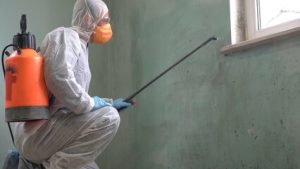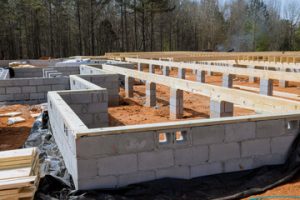Like any piece of machinery, cars need regular maintenance and repair to keep them running in top condition. But finding a shop you can trust can be tricky.

It’s easy to get desensitized to warning lights or think a simple repair (like a tire rotation) doesn’t require a professional. But finding a trustworthy mechanic can save you a lot of headaches in the long run. Read on Auto Repair In Antioch CA for more information.
Shops that specialize in specific brands tend to offer higher-quality repairs than general shops. This is because technicians at brand-specific shops are familiar with that car maker’s repair process and techniques. They also receive ongoing technical training and support. This makes them better equipped to address problems unique to a particular vehicle type, and they can offer a more personalized service experience. For example, a shop that specializes in Mercedes-Benz repairs is likely to have technicians who are certified by the German automaker to service its latest models and trim levels.
Another advantage of brand-specific shops is their access to genuine OEM parts directly from the manufacturer. These parts are designed to fit your vehicle, ensuring a seamless integration and a high-quality repair. However, the cost of using original equipment parts can add up. Shops that provide clear, transparent pricing and detailed explanations of repairs and their cost can help minimize these expenses.
A quality repair shop will always prioritize customer satisfaction, and this translates into efficient service with minimal downtime. Look for a clean, organized facility and friendly, knowledgeable staff who take the time to explain issues in layman’s terms. Inquire about the average wait times and turnaround rates, and consider how much they charge for diagnostics.
While online reviews can give you a sense of a shop’s reliability, personal recommendations from friends and family who own similar vehicles can be more trustworthy. Read through the reviews, and pay attention to recurring themes like fairness in pricing and transparency in communication.
When choosing a repair shop, check their reputation and whether they offer a warranty on parts and labor. Many reputable shops provide warranties that range from 12 to 24 months, providing additional peace of mind and protection in case of future problems.
When it comes to finding the right repair shop, personal recommendations are often the best option. Ask friends and family members for their experiences with different shops, and look for reviews that mention fairness in pricing, transparent service, and quick turnaround times. You can also observe the cleanliness and professionalism of a shop, and notice how well-equipped they are with advanced equipment and tools for diagnostics and repairs.
General Auto Shops
Whether your vehicle needs an oil change, brake repairs, or engine diagnostics, general auto shops are a convenient way to get high-quality car maintenance. Regular service prevents major problems that can be expensive to repair and keeps your vehicle running efficiently.
If you want to save time and money, follow the manufacturer’s recommended maintenance schedule. It may seem like a hassle but staying on top of preventative maintenance will help you avoid bigger, more costly problems down the road. In addition, not following the manufacturer’s maintenance guidelines can void your vehicle’s warranty.
When choosing a general auto shop, find one with qualified technicians and a good reputation. Ask your family, friends and co-workers for recommendations or search online for reviews. Look for a shop with an easy-to-use customer dashboard that lets you view the progress of your repair, order parts, and schedule appointments.
Moreover, a general shop can provide amenities such as shuttle services and loaner vehicles to minimize downtime. They can also offer competitive prices for their services, making them a quick go-to option when you don’t need specialized Diesel engine repair Maryland or specific auto parts.
It is important to set up a business strategy for your auto repair business. This includes determining how much you want to grow and in which areas you want to specialize. You can then use tools such as Tekmetric’s reports to monitor your profitability and costs so you can make informed decisions about how you can best serve your customers.
Tekmetric can help you track your performance, so you can manage the growth of your auto repair business. Our software can help you create estimates faster, improve the turnaround time for your repairs, and boost customer satisfaction. It will help you organize your repair process, so you can easily view the progress of each job and clearly see which ones take precedence over others. This will make it easier for you to communicate with your customer and address any concerns they may have. Our system can also track all of your repairs, invoices, and payment history in a single dashboard.
Dealerships
Dealerships are a great place to find car repair services for any make or model. They have highly trained technicians, state-of-the-art equipment and factory-specified parts. They also have the experience to know how to handle today’s complex electronic systems. They also understand the importance of preserving your vehicle’s resale value.
A dealership should be able to give you a good estimate for how much your vehicle will cost. They will take into account your trade-in and any other loans or leases you have. They will also check the vehicle identification number (VIN) to see if the car has been in any reported accidents. This can help them determine if your vehicle is a good candidate for a certified pre-owned or used car.
Car dealerships offer a variety of service options, including express service lanes, night and weekend hours, loaner cars, guaranteed time of delivery, and warranty maintenance programs. Some even have a dedicated service department that specializes in specific models. These departments can ensure that your car is always running well and will retain its resale value.
In addition to providing excellent auto repairs, dealers can offer a wide range of accessories, such as roof racks, cargo nets and covers, wheels and tires, awnings, floor mats, and more. They can also provide financing and leasing options, which may be easier to qualify for than individual sellers. Additionally, some dealers will include buyer rebates and incentives to reduce your tax liability.
Another benefit of dealerships is that they can often sell genuine replacement parts. These parts can be more expensive than generic or aftermarket parts, but they will keep your car running smoothly and may help extend its life. Using these genuine replacement parts can also ensure that your warranty is valid.
Although the cost of auto repairs and maintenance isn’t glamorous, it is necessary to protect your investment. Without regular maintenance, your vehicle will likely need repairs in the future. Choosing a trusted dealership can save you money, time and frustration. It can also help you avoid expensive repairs and ensure your car runs its best.
Specialty Shops
Most people spend a lot of time considering which vehicle they’re going to purchase, but they often don’t put the same effort into finding a mechanic to maintain and repair their car once it’s out of warranty. That’s a mistake because a good auto shop can save you money and ensure that your car stays safe to drive for the years to come.
Choosing the right auto repair shop for your needs starts with looking at their reputation in your community. Look at customer reviews and ratings, and find out if they’re certified by the Better Business Bureau. You can also ask friends and neighbors for recommendations.
Next, check to see how long the employees have been with the shop. This can tell you a lot about their level of stability and commitment to the company. If they have a high turnover rate, it may be a sign that they’re not a good fit for your needs.
Look for a shop that has a wide range of services, from basic maintenance to advanced repairs. This can help you avoid hopping between shops for each of your automotive service needs, and it can also save you time by allowing you to get all of your repairs done at one location. Finally, choose a shop that offers a warranty on their work. This can give you peace of mind that if something goes wrong, you have someone to turn to for help.
You should also look at whether a shop offers a discount on your repair costs. Some companies offer a discount for new customers, while others have discounts for repeat customers. It’s important to know if a repair shop is offering these deals before you make an appointment, so that you can plan accordingly.
Finally, it’s important to understand that auto repair shops cannot perform work covered by your insurance policy, unless it’s part of a covered accident. Any repairs made as part of preventative maintenance would not be covered by your insurance, and that’s why it’s so important to stay on top of your car maintenance.

